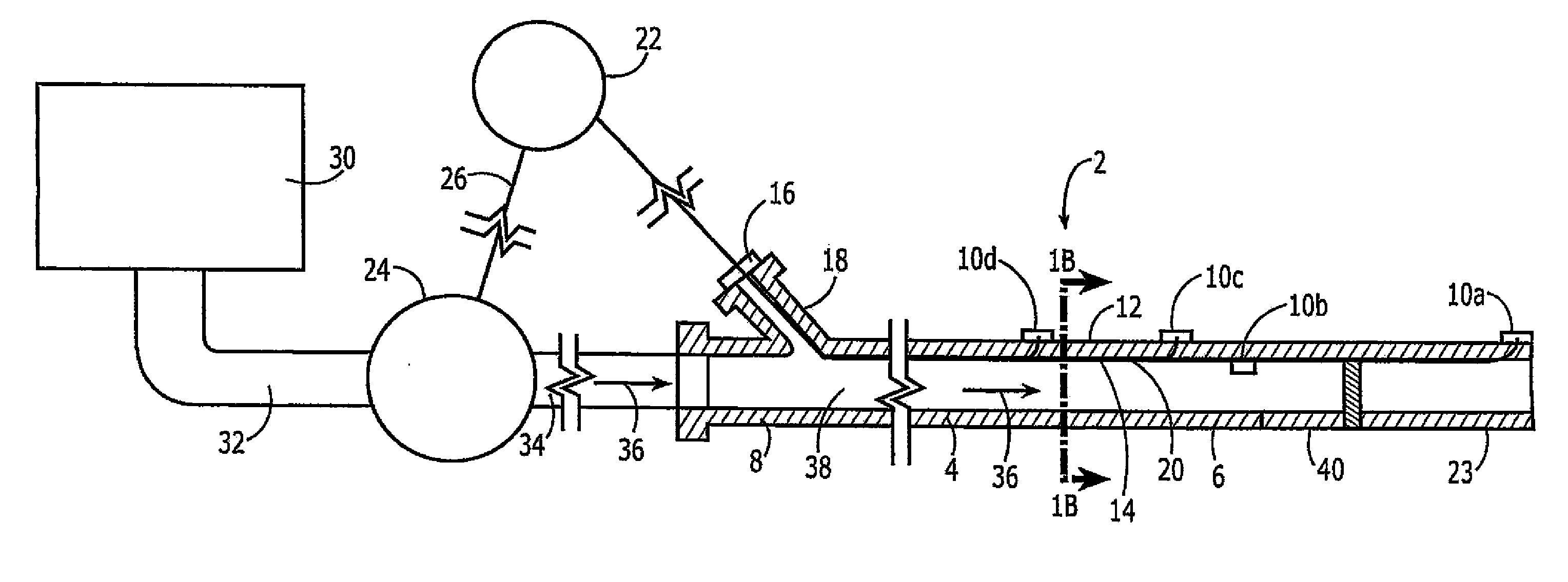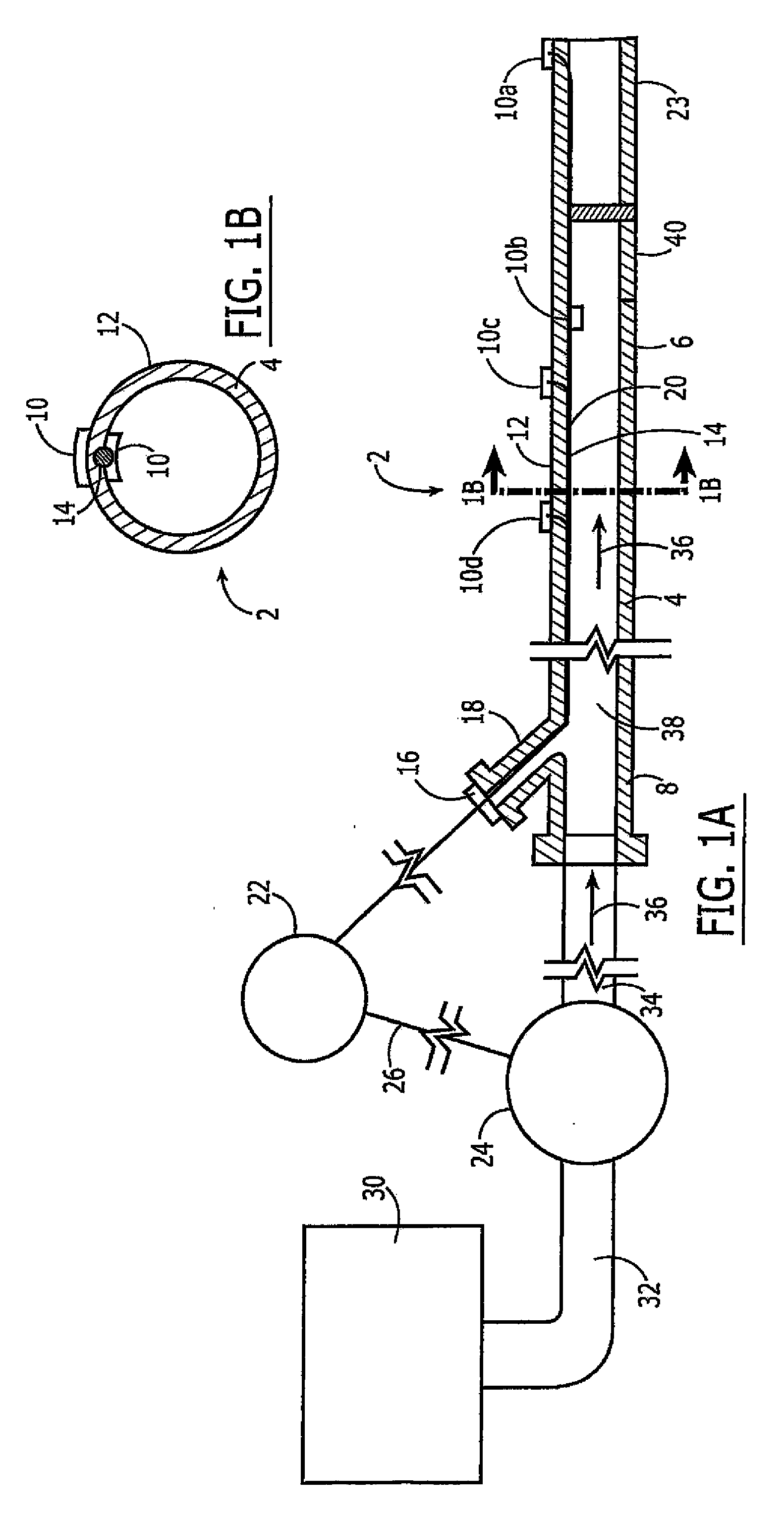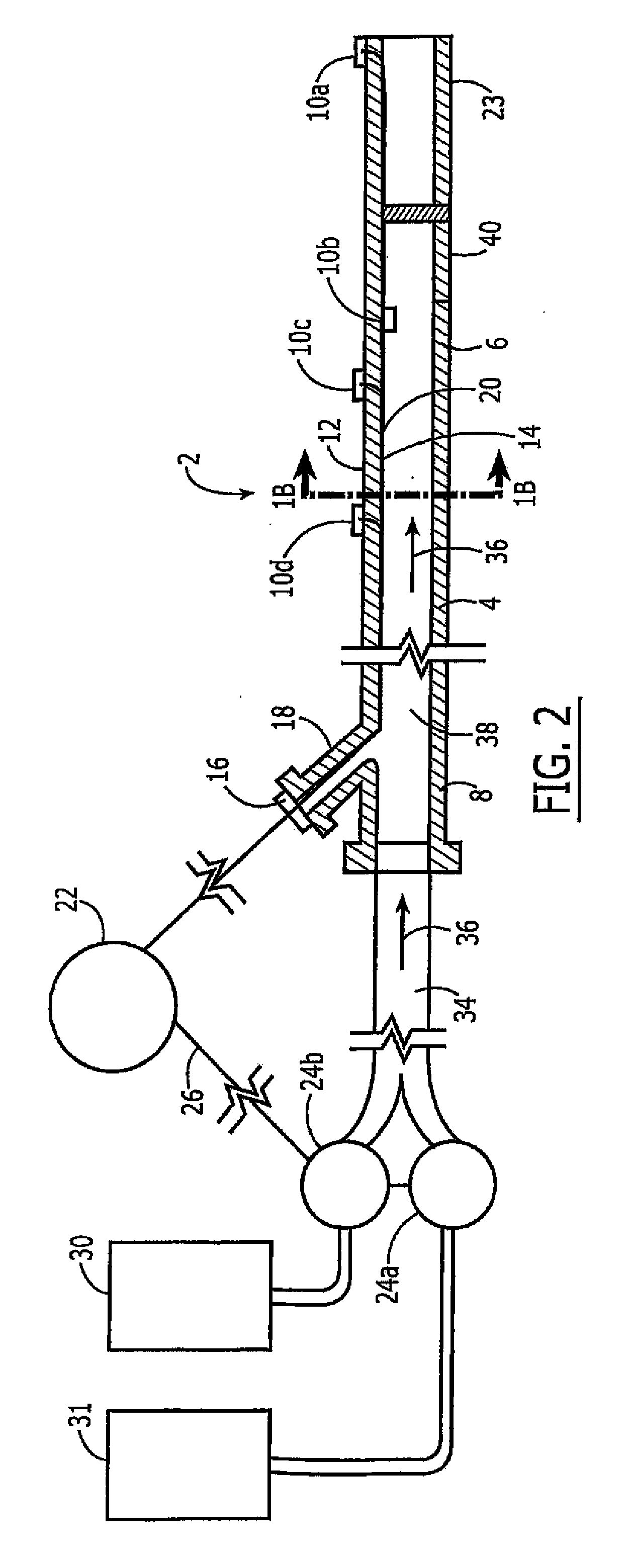Systems and methods for intravascular cooling
a cooling system and intravascular technology, applied in the field of intravascular cooling systems and methods, can solve the problems of reducing cardiac output, organ damage, and unsuitable selective organ hypothermia systems of dato and ginsburg, and achieve the effect of decreasing the temperature of infusate, and increasing the infusion rate or volume of infusa
- Summary
- Abstract
- Description
- Claims
- Application Information
AI Technical Summary
Benefits of technology
Problems solved by technology
Method used
Image
Examples
Embodiment Construction
[0122]FIG. 1A is a schematic representation of a catheter 2 according to an exemplary embodiment of the present invention including a longitudinally extending tubular member 4 having a distal catheter section 6 and a proximal catheter section 8. The catheter 2 is inserted into a patient distal catheter section 6 first. Distal catheter section 6 has one or more sensors 10a, 10b, 10c, 10d, such as temperature sensors, e.g., thermistors, affixed to or embedded in the outer surface 12 and / or inner surface 20 of tubular member 4. Each sensor 10a, 10b, 10c, 10d may have a proximally extending wire 14 that extends into and through a lumen 38 of catheter 2 and connects through plug 16 in a manifold 18 to a microprocessor, servomechanism, or controller 22. Alternatively, each wire 14 may extend through a wall of the catheter 2 or sensors 10a, 10b, 10c, 10d may be wireless. FIG. 1b is a cross-sectional view of catheter 2 taken along the line 1B-1B. Controller 22 is able to adjust infusion rat...
PUM
 Login to View More
Login to View More Abstract
Description
Claims
Application Information
 Login to View More
Login to View More - R&D
- Intellectual Property
- Life Sciences
- Materials
- Tech Scout
- Unparalleled Data Quality
- Higher Quality Content
- 60% Fewer Hallucinations
Browse by: Latest US Patents, China's latest patents, Technical Efficacy Thesaurus, Application Domain, Technology Topic, Popular Technical Reports.
© 2025 PatSnap. All rights reserved.Legal|Privacy policy|Modern Slavery Act Transparency Statement|Sitemap|About US| Contact US: help@patsnap.com



